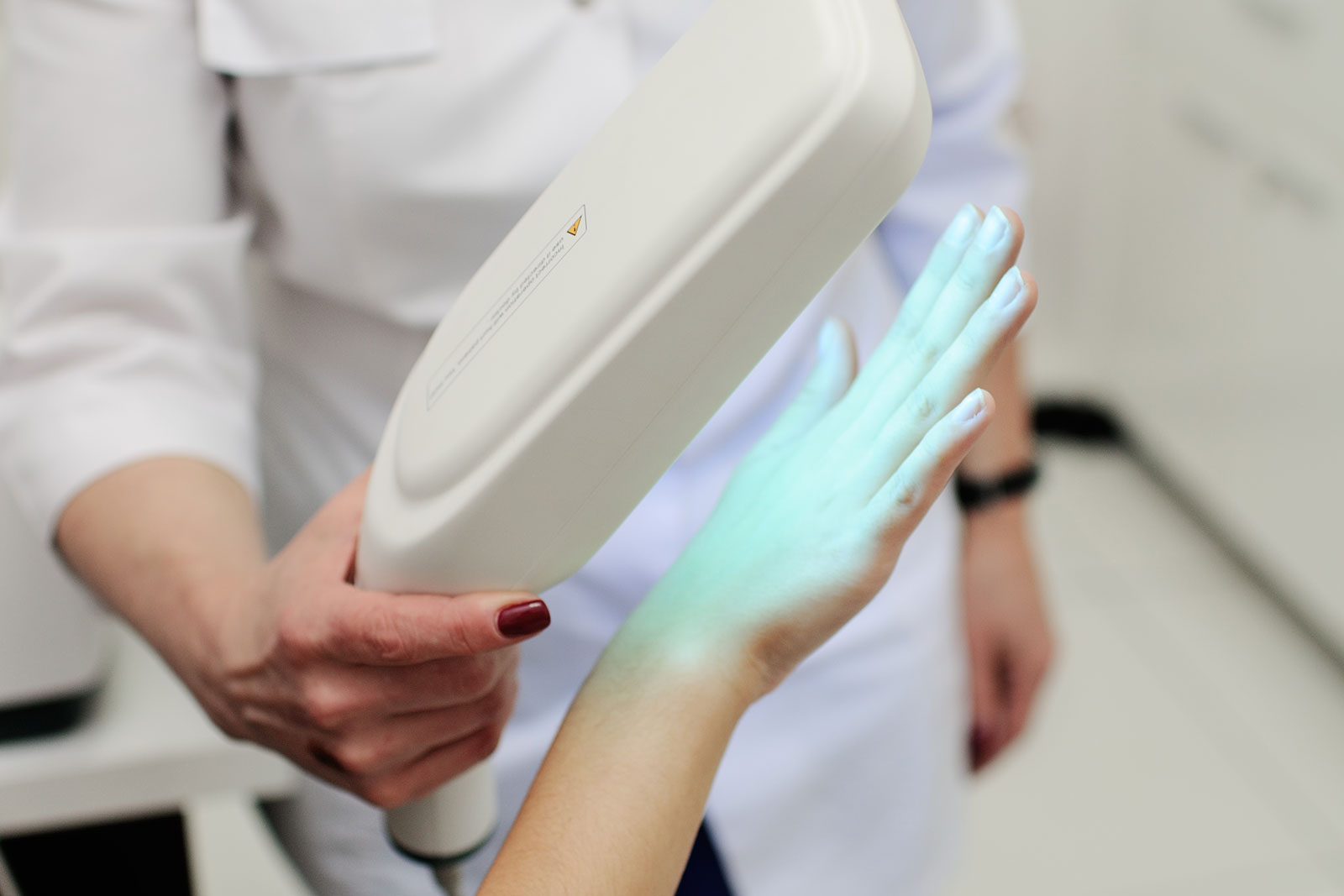Phototherapy or light therapy uses specific wavelengths of light in the ultraviolent (UV) range to treat certain skin disorders. Ultraviolent light has anti-inflammatory properties in the skin and can be used to decrease skin inflammation and decrease skin itching. It can be used to treat many inflammatory disorders including dermatitis or eczema and psoriasis. It can also be used to treat autoimmune disorders such as vitiligo and even skin lymphomas including early cutaneous T-cell lymphoma or mycosis fungoides. This treatment is usually performed in a dermatology office and needs to be prescribed by a dermatologist. The treatments usually start at 3 times per week and the time exposed to the UV light may increase with time. Phototherapy is a very safe treatment and can be used in both adults, children, and pregnant females. The most common side effects include skin redness, burning, stinging, and itching. Occasionally more severe sun-burn like reactions can occur. Phototherapy should be avoided in people with certain medical conditions or if you are on medications that can make your skin more sensitive to the sun. There are many different types of phototherapy which depend on the wavelength of light used in the treatment. Talk to your local dermatologist today to see if light therapy is right for you!
What are the different types of phototherapy?
- Narrowband ultraviolet B (UVB)
- Broadband ultraviolet B (UVB)
- Ultraviolent A (UVA)
- Psoralen and UVA (PUVA)
- Excimer laser
What skin conditions is phototherapy used to treat?
Phototherapy can be used for many different types of skin conditions including eczema, dermatitis, psoriasis, vitiligo, cutaneous T cell lymphoma, mycosis fugodes,
What can I expect when I receive my phototherapy?
Phototherapy is usually done at a dermatologist’s office. Occasionally, if phototherapy works for you, your dermatologist can prescribe you an at-home light box. Phototherapy can be delivered in many different forms. The most common is a light box. This is an upright unit that you stand or sit in and the light shines at you from all directions. If your skin condition is localized to your hands, feet or scalp then your dermatologist may recommend a hand and feet unit or scalp combs. Usually treatments start at 2-3 times per week and the time exposed to the UV light increases with time.
How do I start phototherapy?
Make an appointment with your local dermatologist. You and your dermatologist can decide if phototherapy is right for you!

